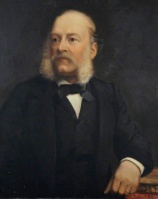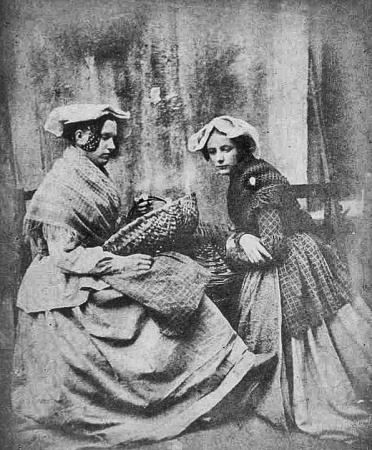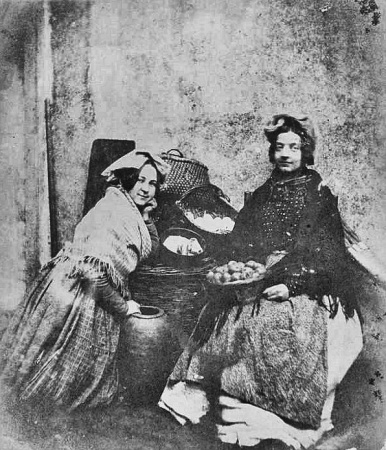
William Collie was probably the first photographer to use Fox Talbot's calotype process in Jersey and some of his previously unpublished photographs featured alongside those of Fox Talbot in an exhibition at the Musée Dorsay in Paris in 2008 of the first photographs taken on paper in Britain from 1840 to 1860.
Collie was born in Scotland in 1810 and was in business in Jersey in Belmont Road and Bath Street from before 1850 until 1878. A picture of Market Women in St Helier taken in 1847 and printed on salted paper survives in a private collection.
Collie was certainly taking photographs before he diversified his business into the art, but given his undoubtedly extremely important position in the early years of British photography, remarkably little is known about him, and few of his pictures are accessible online.
Biography from Encyclopedia of Nineteenth-Century Photography
- William Collie (1810-1896) was born in Skene, Aberdeenshire, Scotland in October 1810 and like many other early photographers, started his professional life as a portrait painter. He moved south and is recorded as living in St Helier, Jersey, before 1841, where he had a portrait business. He became one of the earliest photographers working in the Channel Islands, operating from Belmont House, St Helier, until 1872. Another photographer, J Collie, is recorded at the same address between 1861-64. This was probably his wife, or other relation.
- Collie was not merely a provincial studio portrait photographer. In the late 1840s he made a series of genre calotype portraits depicting ‘French and Jersey Market Women’ which were well received by the photography critic of the Art Union (1 June 1847) who compared them to the work of David Octavius Hill. These studies were later exhibited at the London Great Exhibition of 1851.
- In 1860 Collie is known to have made a photograph of the total eclipse of the sun, which occurred on 18 July.
- La Société Jersiaise has a collection of his work.

Société collection
The Société Jersiaise Photographic Archive lists 157 photographs by William Collie, but not a single one can be viewed online. What are apparently self-portraits are accompanied by the notice 'Image field to be deleted RPS request' and all 157 images are described as being the copyright of the Royal Photographic Society. None are visible to website visitors. This is an absolute nonsense, because the images ceased to be anybody's copright 70 years after William Collie's death - ie in 1966.
The images cannot be seen on the Royal Photographic Society website, nor on that of the Victoria and Albert Museum, to which the RPS collection has been passed.
One of those listed in the Société Jersiaise Photographic Archive is a photograph of Elie Jean Filleul, who died aged 102 in 1851.
The vast majority of the 157 images listed on the Société website are portraits, but there are four pictures of Jersey scenes which, if the information in their records is accurate, are contenders for the accolade of the earliest surviving views of Jersey. They feature the Church of Scotland in Midvale Road, houses on Queen's Road, Gorey andMont Orgueil Castle, and a granite, thatched cottage. All are dated 1845-1850.
It is so sad that these hugely important images are hidden from public view and we can neither see them, nor show them to users of our website.
Market women
These remarkable photographs are 174 years old, and while probably not quite the oldest surviving photographs taken in Jersey (that honour is believed to go to a Daguerrotype taken in 1845 by artist-turned-photographer Philip Ouless in 1845) they are certainly the oldest set of images, and because two are signed and dated, can be confidently said to date from 1847. Unfortunately we do now know whether these images are all held in one collection. Being paper-based images it is likely that more than one of each exists in different collections. Some are believed to be included in the La Société Jersiaise photographic archive, but their collection cannot be viewed online.













